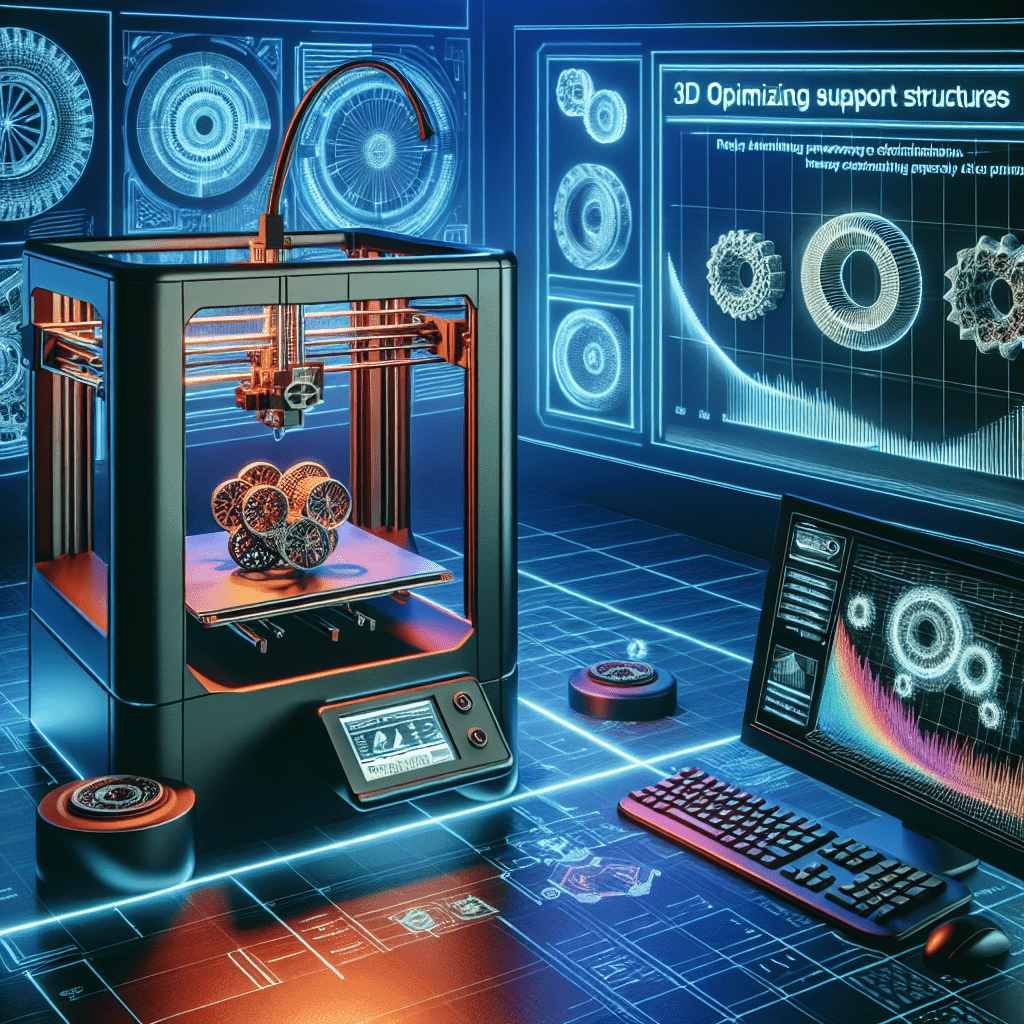Table of Contents
Introduction
3D printing has revolutionized the way products are designed and manufactured. With its ability to create complex shapes and structures with ease, 3D printing has become a popular choice for a wide range of industries, from aerospace and automotive to healthcare and consumer goods.
One of the key challenges in 3D printing is the need for support structures. These structures are necessary to provide stability and prevent deformation during the printing process, but they can also add time and cost to the overall production process. In this article, we will discuss how to optimize support structures for 3D printing in order to maximize efficiency and reduce waste.
Understanding Support Structures
Support structures are temporary elements that are added to a 3D printed object to provide support for overhanging or intricate features. Without support structures, these features would collapse or deform during the printing process. Support structures are typically made from the same material as the object being printed, but they are designed to be easily removed once the printing is complete.
There are several different types of support structures that can be used in 3D printing, including:
– Tree supports: These supports are designed to mimic the structure of a tree, with branches that extend from the base of the object to provide support for overhanging features.
– Lattice supports: These supports are made up of a lattice-like structure that provides support while also allowing for airflow and easy removal.
– Solid supports: These supports are made from solid material and are typically used for objects with complex geometries that require additional stability.
Designing Efficient Support Structures
When designing support structures for 3D printing, it is important to consider the following factors:
– Orientation: The orientation of the object being printed can have a significant impact on the amount of support needed. By orienting the object in a way that minimizes overhangs and reduces the need for support, you can save time and material.
– Material: The type of material being used for the object and the support structures can also affect the efficiency of the printing process. Some materials may require more support than others, so it is important to choose the right material for the job.
– Thickness: The thickness of the support structures can also impact the overall efficiency of the printing process. Thicker support structures may provide more stability, but they can also add time and cost to the production process.
Optimizing Support Structures for Efficiency
There are several ways to optimize support structures for 3D printing in order to maximize efficiency and reduce waste:
– Use software tools: There are a number of software tools available that can help you optimize support structures for 3D printing. These tools can analyze the geometry of the object being printed and provide recommendations for the placement of support structures.
– Experiment with different types of supports: Not all support structures are created equal. By experimenting with different types of supports, you can find the most efficient solution for your specific printing needs.
– Minimize the use of supports: In some cases, it may be possible to design objects that require minimal support structures. By designing objects with self-supporting features and minimizing overhangs, you can reduce the need for support structures and save time and material.
Conclusion
Optimizing support structures for 3D printing is essential for maximizing efficiency and reducing waste. By understanding the different types of support structures available, designing efficient support structures, and experimenting with different solutions, you can streamline the printing process and save time and money. With the right approach, you can achieve high-quality prints while minimizing the need for support structures.
FAQs
How much do support structures add to the cost of 3D printing?
The cost of support structures can vary depending on the complexity of the object being printed and the type of support structures being used. In general, support structures can add anywhere from 10-50% to the overall cost of 3D printing.
Can support structures be reused?
In most cases, support structures are designed to be easily removed and discarded after the printing process is complete. However, in some cases, support structures can be reused if they are in good condition and can be easily removed from the object.
How can I minimize the need for support structures in 3D printing?
There are several ways to minimize the need for support structures in 3D printing, including designing objects with self-supporting features, orienting objects to minimize overhangs, and experimenting with different types of supports.
